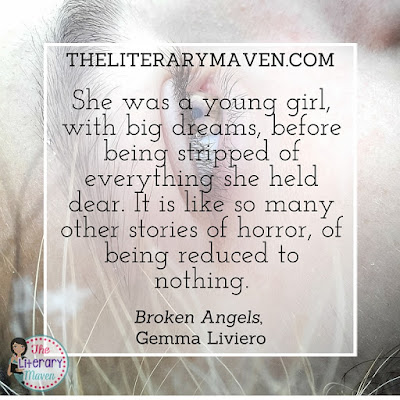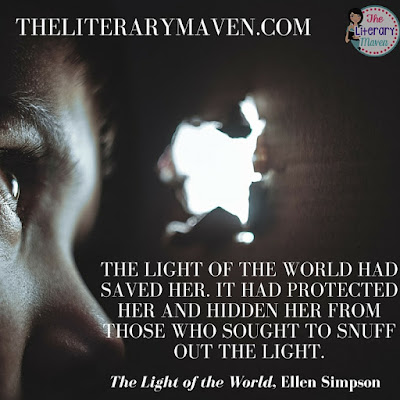 A guest blog post by Katherine Fleet, young adult author
A guest blog post by Katherine Fleet, young adult author
Hi! I’m Katherine Fleet, debut author of the young adult novel, The Secret to Letting Go. I’m also a Canadian who is lucky enough to live on the Caribbean island of Curacao with my husband and three kids.
Four years ago, I discovered National Novel Writing Month and fell in love with the program. For those who haven’t heard of it, writers challenge themselves to write a novel in one month. NaNoWriMo happens in November and a key component is the support you receive from other writers also working toward the same goal of crafting 50,000 words in one month. My debut novel is the first NaNoWriMo book I wrote in 2012.
As I was getting ready to participate again in 2013, I discovered an amazing program developed by the folks at NaNoWriMo to support young writers. It’s aptly called the Young Writer’s Program (YWP) and is very similar to the adult version with a few key differences. Instead of committing to writing 50 K in one month, young writers are allowed to set their own goal for the month. It operates on a separate website, allowing educators to set up a virtual classroom for their participating students and letting students chat with young writers from around the world on various writing topics.
I was immediately drawn to YWP for a few reasons. First, I wrote my first novel in my 30s, but regretted not starting sooner. I’ve always wondered what would have happened if I’d been encouraged to write when I was younger. I also live on a small island and there’s not a large writing community here. I wanted to talk to other writers, and their age didn’t matter. I just wanted to find other people who were passionate about writing. Finally, my daughter was in middle school and loved to write, but I think she felt alone in this interest. I wanted her to find other kids who shared her interest.
So what happened? I approached the school, and this past November, the International School of Curacao (ISC) participated in their third NaNoWriMo! Spearheading the program, here’s what I’ve tried and learned so far.
In October, I go into all Middle School and High School English classes to give a presentation to the students. I stress that NaNo is voluntary, that they are not required to turn in their writing to anyone to be checked or graded, and that this is a chance to write about whatever they want, including fan fiction. It’s also about learning to turn off your internal editor. Writing and revising are two different processes and the goal of NaNo is to create a first, rough draft.
We run NaNo as an extra-curricular activity. Interested students join our virtual classroom and with
the help of the teacher and the online site, they figure out a reasonable word count goal for the month. During November, we hold a kick-off party, weekly writing sessions where we word sprint together, and a closing party. We hold these off school grounds, at places like Starbucks or the local McCafe, which helps distinguish the writing from regular schoolwork. This year, we also added a pajama and pizza writing party at the school’s library around the mid-way point. It was a big success. I love cake, so there’s always a cool NaNo- themed cake involved.
I see a direct correlation between student participation and teacher support. There is one high school English teacher who loves NaNo. She offers NaNo participation to her high school students as an alternative to her November class assignment. She also lets students participate in word sprints during class time.
Every year, the students surprise me. First, the students who are really committed to NaNo are often not the ones I would have suspected. I’m reminded that there are no ‘typical’ writers. There are just writers. Also, students come up with the most amazing plots and characters for their novels. Sure, some of them are just starting their writing journey, but they are clearly on the journey. This is so inspiring to me. Finally, they can follow through. Last year, one of the student writers sailed past her 30 K goal and still had a week left in November.

Through this process, I’ve also had to adjust my expectations. When I first went to the school, I pictured all grades and teachers working this fully into their curriculum. I pictured packed writing events and awards to all the participants. I was clearly naïve. Just like adults, not every student is interested or passionate about creative writing. But NaNo provides a chance for those kids who are interested to test their writing chops and see what it’s like to be part of a supportive writing community. For that reason, I’ll keep organizing this event every year. One day, I know I’ll see some of these students with their first published novel!
If you’re interested in starting your own NaNo program at your school, here are a few tips for getting started:
1. Check out the
National Novel Writing Month Young Writer's Program website. Under the “Educators” tab, it explains how to set up a personal profile and virtual classroom, and it provides
lesson plans and
writer's workbooks for various grade levels. Because ISC is a small school and participation is voluntary, we have one virtual classroom that all students join.
2. Students will need to create an online profile and then be added to the virtual class. We’ve done this during school time to make sure they don’t have any problems.
3. Their word count goal will default to 30,000 words. To help them set a realistic goal, we use the word count goal calculator (found on the YWP site) during class time. Students free write for 10 minutes. Their word count is then calculated and this number is used to help them set a goal. It should be challenging, but obtainable. The goal can be adjusted anytime up to November 24.
4. Check out the various forums for students. Some of my favorites are the Character Café and Adoption Corner. Students can offer up plots, titles or characters that they came up with and don’t want, and other students can adopt them.
5. Students love to “word sprint” together. Decide on a set amount of minutes (anywhere from 15 to 30 minutes). Set an alarm or timer. For that period, everyone writes as many words as they can. No distractions. At the end, they compare words counts. Students are ALWAYS amazed by how many words they can write, often reaching their daily goal in one sprint.
6. Consider writing yourself. We’ve had two teachers write with us, and it really helps them relate to the struggles their students might be going through – writer’s block, problems with characters or plots, or just
struggling to find time to write.
7. Find a local author willing to come in and help with NaNo events. There are a lot of writers and authors participating, so there is sure to be someone in your community.
8. Encourage ways for students to talk about their stories (without requiring them to share any writing). We normally set students up in pairs and have them interview each other about genre, setting, characters, plot, etc. Then, students take turns presenting their partner’s book. A few years ago, the Grade 5 teacher had six girls participating. They met every Friday after school, drank hot chocolate, and talked about their stories and helped brainstorm ideas. I loved joining their amazing discussions!
9. Remind students to validate their words prior to midnight on November 30th. Students must paste their words into the word count validator, which only counts the words. No one reads the words! If they meet their goal, they win. This includes prizes like free printed copies of their book (if they choose to use it). We always have one student who forgets to validate and is disappointed when they don’t 'win.'
If you have any questions, contact the folks at the
Young Writer’s Program. They’ve always been prompt and very helpful.



























